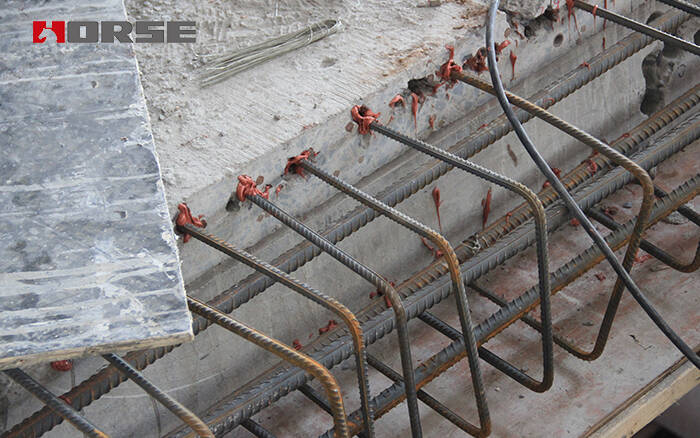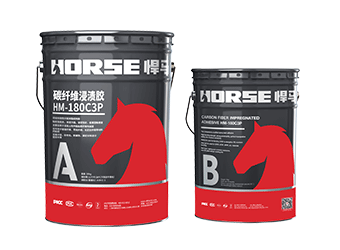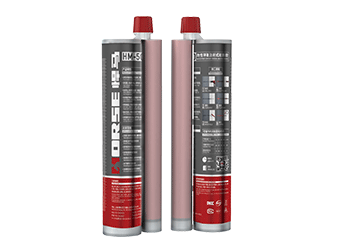Solutions
Horse Construction offers full range of structural strengthening materials with technical supports, documentation supports, products supports, project supports.
What Are The Requirements For Adhesives For Structural Reinforcement?

Nowadays, house reinforcement projects are more and more widely used. Due to improper use and maintenance or construction quality reasons, many houses have problems of one kind or another, some of which are quite serious, endangering structural safety. Although houses have some problems, they are often not demolished and rebuilt. Instead, structural reinforcement is adopted. As long as a small amount of investment is spent on repairs and reinforcements, its bearing capacity can be restored to ensure safe use. In structural reinforcement projects, structural adhesives are used. Many people do not understand structural adhesives. A type of adhesive used on stressed components. It is generally required that the stress that the cemented joint can withstand is equivalent to the strength of the adherend itself. The adhesive itself has excellent heat resistance, medium resistance, atmospheric aging resistance, vibration fatigue resistance, low creep and high durability.
Classification of structural adhesives:
1) Structural adhesive is the main material for bonding and reinforcement, and the difference in its mechanical properties is directly related to the quality of the reinforcement.
2) According to the use environment, it is divided into: normal temperature glue, high temperature glue, low temperature glue, moisture-resistant glue, etc.
3) According to the content of use, it is divided into: sticky steel glue, planting steel glue, steel-clad pouring glue, joint potting glue, sealing glue, carbon fiber glue and so on.
4) According to chemical composition, it is divided into: organic glue, inorganic glue and so on.
Organic structural adhesives include epoxy resins and modified epoxy resins, polyurethanes, unsaturated polyester resins, etc. At present, organic glues are used in bonding and reinforcement, and most of these glues are prepared with epoxy resin or modified epoxy resin as the main agent. Its main components are: epoxy resin, curing agent, plasticizer, diluent, coupling agent, anti-aging agent, etc. The structural adhesive with epoxy resin as the main agent has strong bonding force and stable mechanical properties. It is an ideal structural adhesive for bonding and strengthening. At present, this type of adhesive is widely supplied in the market.
Inorganic structural adhesives include silicates, phosphates, ceramics, etc. There are not too many inorganic adhesives used for bonding and reinforcement, especially there are fewer high-strength inorganic adhesives that cure at room temperature.
Technical requirements: Adhesives used in load-bearing structures must be tested for safety performance. During the inspection, the standard value of the bond shear strength should be determined according to the requirements of the confidence level c=0.90 and the guarantee rate of 95%. Adhesives for impregnating and bonding fiber composite materials must be specially formulated modified epoxy resin adhesives. Unsaturated polyester resins, alkyd resins, etc. shall not be used as impregnating and bonding adhesives in the reinforcement of load-bearing structures.
Adhesives for pasting steel plates or exterior steel must be specially formulated modified epoxy resin adhesives.
Adhesives for planting anchors must be specially formulated modified epoxy resin adhesives or modified vinyl ester adhesives. (Including the adhesive of modified urethane glue for planting anchors, the filler must be added when making the glue in the factory, and the adhesive is strictly prohibited)
Adhesives used for reinforcement of reinforced concrete load-bearing structures must pass the damp heat aging test for their steel-steel bond shear resistance. The damp heat aging inspection should be carried out under the environmental conditions of 50℃ temperature and 98% relative humidity; the aging time of important components should not be less than 90d; the aging time of general components should not be less than 60d. The specimens after damp heat aging should be subjected to steel-steel tensile shear test under normal temperature conditions. The percentage (%) of the strength reduction of A grade glue shall not exceed 10%, and the B grade glue shall not exceed 15%
Adhesives used to strengthen concrete structures must pass a toxicity test. For fully cured adhesives, the inspection results should meet the actual non-toxic hygienic requirements.
It is strictly forbidden to use ethylenediamine as the curing agent of modified epoxy resin in the adhesive for load-bearing structure; it is strictly forbidden to add volatile harmful solvents and non-reactive diluents.
You can find anything here you are in need of, have a trust trying on these products, you will find the big difference after that.

Good impregnation carbon fiber adhesive for applying carbon fiber reinforced polymer(CFRP) wrap for structural strengthening

High strength carbon fiber reinforced polymer plate adhesive for applying CFRP laminate/strip/plate on the structural members

two-components modified epoxy resin adhesive, with high quality plastic tube, double cartridge package